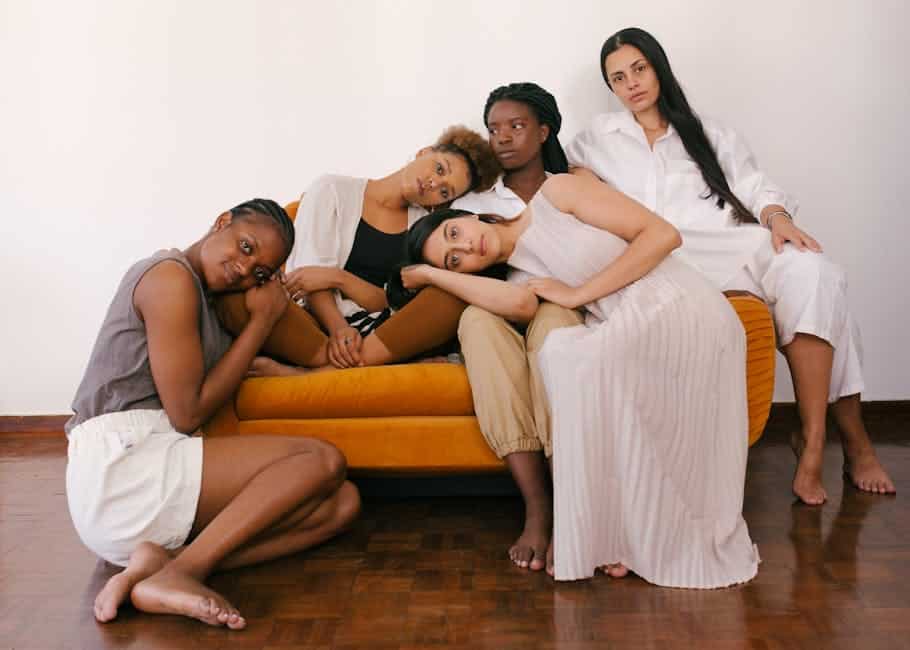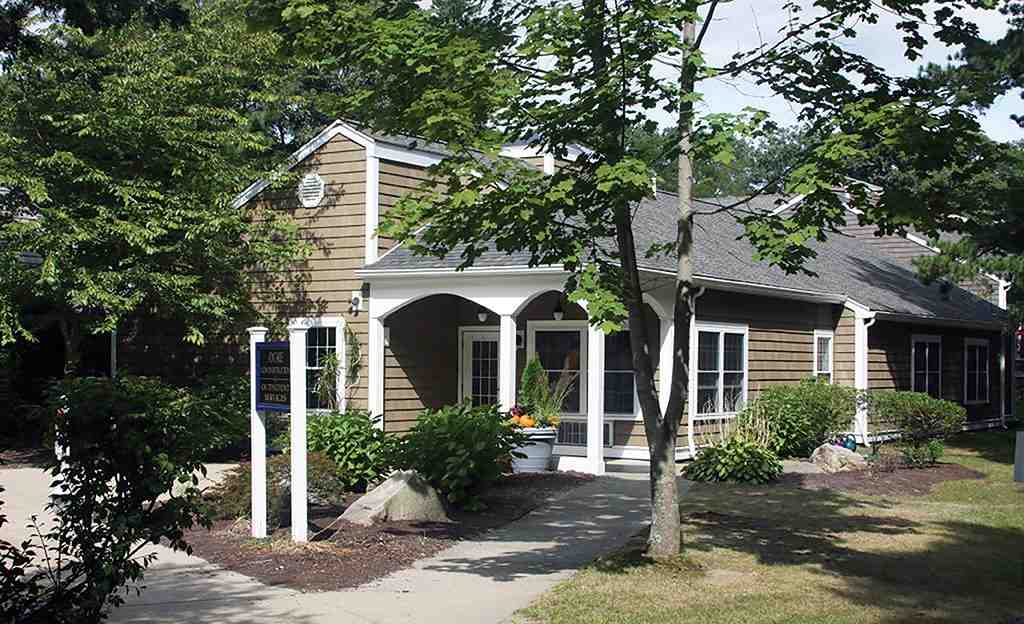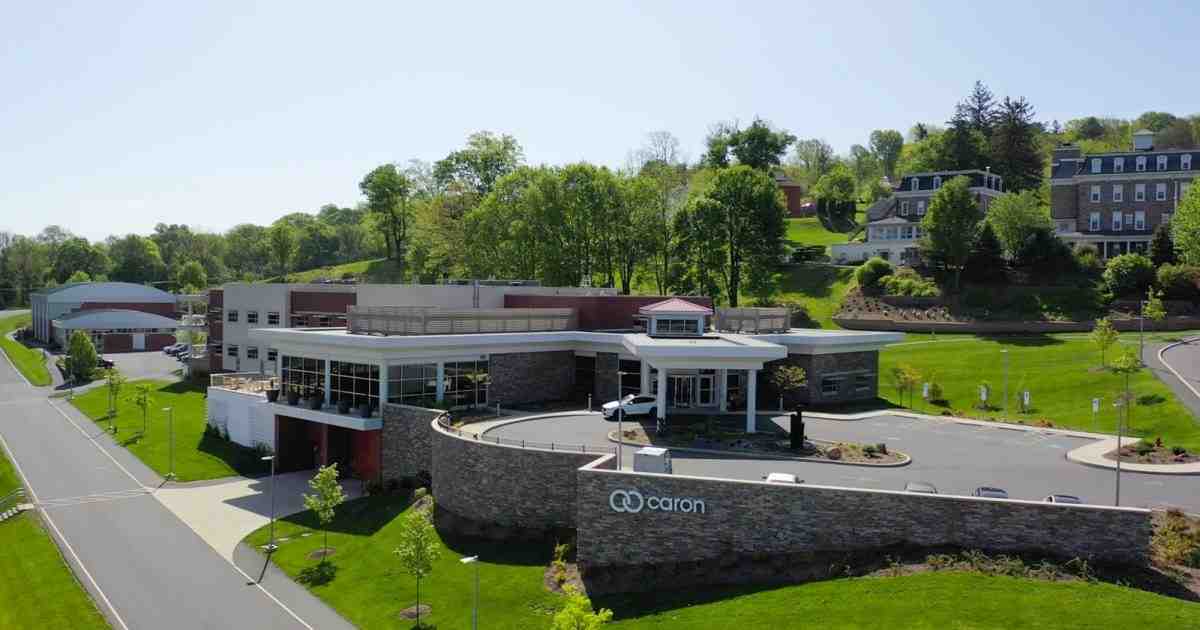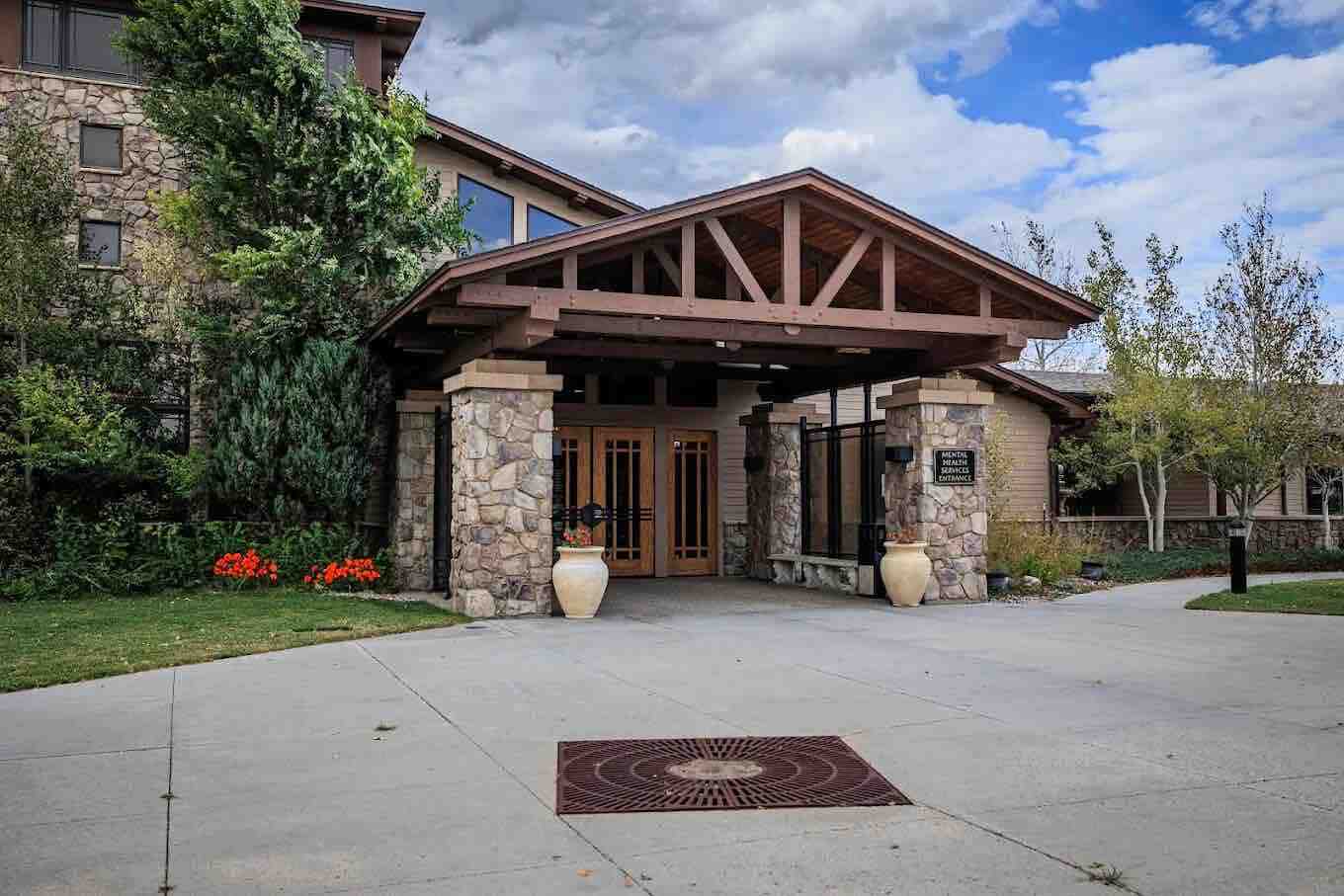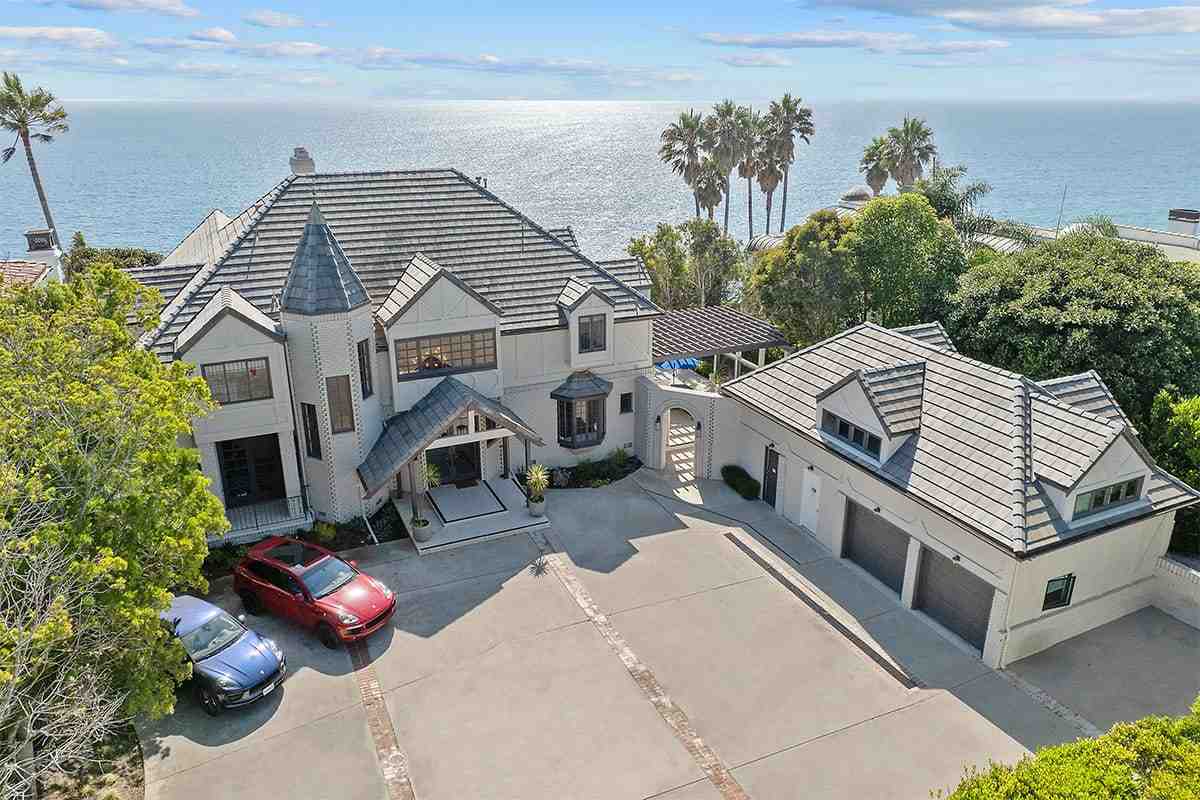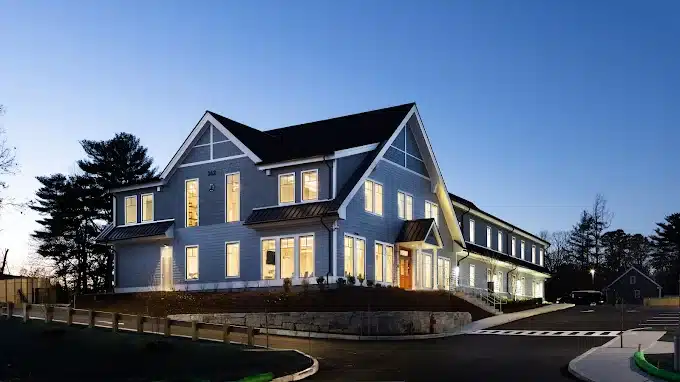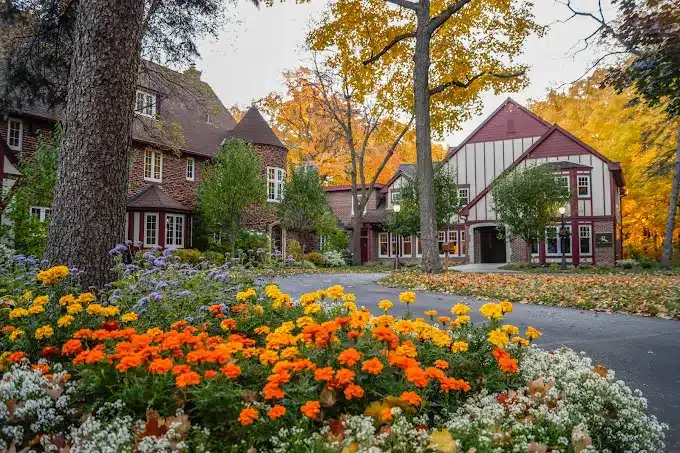
Finding Hope and Help in Minnesota’s Recovery Landscape
Drug rehab in Minnesota features over 386 treatment centers. Here’s a quick overview:
- Average Cost: $56,630 for a 30-day inpatient program.
- Top Centers: Hazelden Betty Ford Foundation, Pride Institute, The Retreat, Vinland National Center.
- Insurance: Most facilities accept Blue Cross Blue Shield, UnitedHealth Group, and Cigna.
- Specialized Care: Options for LGBTQ+, dual diagnosis, teens, and culturally-specific needs are available.
- Payment: Private insurance, Minnesota Medicaid, Medicare, sliding scale fees, and state funding.
- Care Levels: Detox, inpatient, PHP, IOP, outpatient, and sober living.
Minnesota ranks 6th nationwide in drug rehab admissions, with 1,232 admissions per 100,000 people, nearly double the national average. This reflects both the need for treatment and the state’s robust network of quality facilities that combine evidence-based practices with holistic therapies.
Finding the right treatment center in the “Land of 10,000 Lakes” can feel overwhelming, but you have options. From the renowned Hazelden Betty Ford Foundation to specialized centers, help is available. This guide offers seven insider tips to steer Minnesota’s treatment landscape, covering everything from recognizing the need for help to planning for long-term success.
At Addiction Helpline America, we guide individuals and families to find effective drug rehab in Minnesota. We connect people with programs that fit their unique needs and insurance coverage. Our experience shows that informed decisions lead to better outcomes, and we’ve compiled these insights to help you take the first step toward recovery.

Quick drug rehab in Minnesota terms:
- how to find a good drug rehab facility
- how to find rehab programs that accept insurance
- Drug treatment options
Tip 1: Recognize the Signs It’s Time for Help
Acknowledging a problem with drugs or alcohol is the first, and often hardest, step. Denial is powerful, but if you’re reading this, you may already suspect something is wrong. Addiction creeps in gradually, but the signs become clear over time.
Look for these common indicators:
- Behavioral Changes: Increased secrecy, dishonesty, unexplained financial problems, or legal trouble. In Minnesota, DUI arrests are a frequent wake-up call.
- Neglected Responsibilities: A decline in performance at work or school, and a failure to manage duties at home as substance use becomes the priority.
- Physical Health Decline: Unexplained weight changes, poor hygiene, frequent illness, tremors, or dilated pupils.
- Psychological Symptoms: Sudden mood swings, increased anxiety or depression, irritability, and paranoia. These often point to co-occurring mental health conditions.
- Strained Relationships: Frequent arguments, broken trust, and isolation from friends and family.
- Tolerance and Withdrawal: Needing more of a substance to get the same effect (tolerance) and experiencing physical or psychological distress when not using (withdrawal) are clear signs of dependence.
How to Know for Sure
Denial can make you rationalize substance use with thoughts like, “I can stop whenever I want.” If you’re questioning whether you have a problem, that’s a significant sign in itself.
Self-assessment tools provide a confidential way to examine your substance use patterns. While not a diagnosis, a questionnaire can offer clarity. Take a confidential self-assessment to get a better picture.
A self-assessment is just a starting point. The most reliable way to determine if drug rehab in Minnesota is needed is through a professional evaluation. An addiction specialist can conduct a thorough assessment to diagnose a substance use disorder and recommend the right level of care.
At Addiction Helpline America, we connect people with these professionals daily. Reaching out is a brave step, and getting an expert opinion is the foundation for making an informed decision. You don’t have to do this alone.
Tip 2: Understand Minnesota’s Levels of Care
Finding the right drug rehab in Minnesota means understanding the different levels of care. Treatment exists on a “continuum of care,” a spectrum from intensive 24/7 support to weekly check-ins. Patients often move between levels as they progress in their recovery.
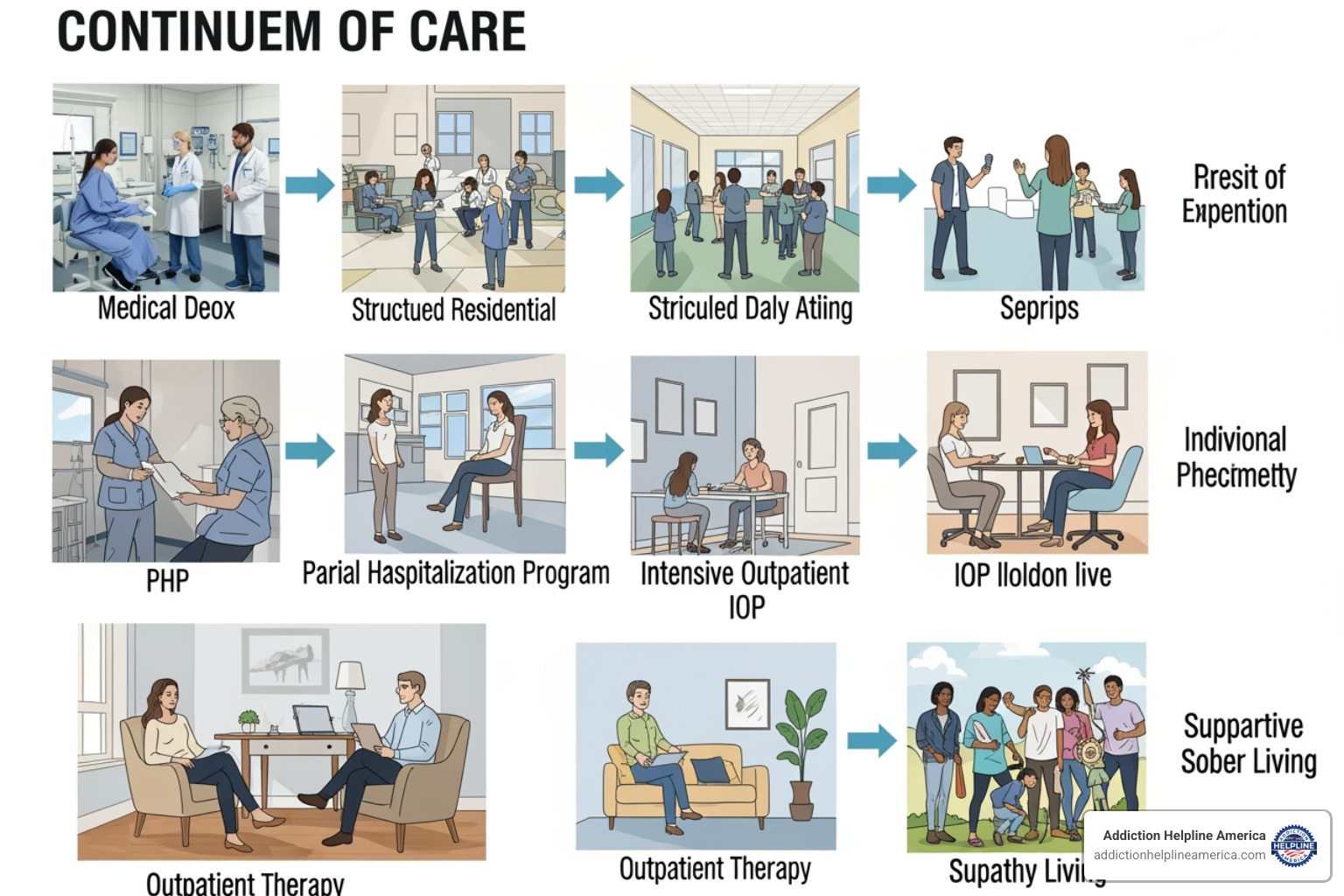
-
Medical Detoxification: This is often the first step, providing a safe, medically supervised environment to manage withdrawal symptoms. It’s about safety, not willpower, and is crucial for those with physical dependence.
-
Inpatient/Residential Programs: This is the most immersive option. You live at the facility for 30, 60, or 90 days, removed from daily triggers. Your days are structured with individual and group therapy, workshops, and holistic activities. Centers like Hazelden Betty Ford Foundation offer respected residential programs.
-
Partial Hospitalization Programs (PHP): Also known as “day treatment,” PHP offers intensive therapy during the day, similar to inpatient care, but you return home at night. It’s a bridge between residential treatment and independent living.
-
Intensive Outpatient Programs (IOP): IOP provides structured treatment for several hours a day, multiple times a week, often in the evenings. This allows you to maintain work or school commitments while receiving substantial support.
-
Standard Outpatient Treatment: The least intensive level, this typically involves weekly therapy or group meetings. It’s suitable for those with less severe addiction or as a long-term aftercare option.
-
Sober Living Homes: These are structured, substance-free homes where residents support each other while practicing recovery skills. They are a valuable step-down from more intensive treatment.
Choosing the Right Level of Care
How do you choose? This isn’t a decision to make alone, but several factors are key:
-
Severity of Addiction: Long-term, heavy use often requires medical detox followed by inpatient care. Milder cases might start with outpatient treatment.
-
Co-occurring Mental Health Conditions: If you’re also dealing with anxiety, depression, or trauma, you need integrated dual diagnosis treatment. More intensive programs like residential or PHP are often best equipped for this.
-
Home Environment: If your home is not supportive of recovery, a residential program provides a safe space to build a strong foundation.
The best way to determine the right level of care is through a professional assessment. An addiction specialist will evaluate your unique situation and recommend the most effective path.
At Addiction Helpline America, we help you steer these choices. We connect you with professionals for a thorough assessment to find drug rehab in Minnesota options that match your needs and insurance.
Tip 3: Decode the Costs and Insurance for Drug Rehab Minnesota
Understanding the cost of drug rehab in Minnesota is a critical step. While the average cost for comprehensive treatment is around $56,630, your actual out-of-pocket expense will depend on the program, length of stay, and your insurance coverage. Minnesota’s average cost is slightly below the national average, making it more accessible than many states.
Here’s a breakdown of potential daily costs:
| Program Type | Daily Cost (0% Insurance) | Daily Cost (60% Insurance) | Daily Cost (80% Insurance) |
|---|---|---|---|
| Inpatient | $629.22 | $251.69 | $125.84 |
| Outpatient | $56.67 | $22.67 | $11.33 |
(Based on a 30-day program)
As the table shows, insurance makes a dramatic difference. Verifying your benefits is essential. Also, budget an additional $1,000 to $1,500 for medical detoxification if needed.
Paying for Drug Rehab in Minnesota
Minnesota offers numerous ways to make treatment affordable:
-
Private Insurance: Most rehabs (363 facilities) accept private insurance. The most widely accepted providers are Blue Cross Blue Shield (125 centers), UnitedHealth Group (111 centers), and Cigna (110 centers). Plans vary, so it’s crucial to verify your specific benefits.
-
Minnesota Medicaid: Known as Medical Assistance, this is accepted at 285 facilities, providing vital access for eligible low-income residents.
-
Medicare: Accepted at 115 facilities, this is an option for older adults and those with certain disabilities. Coverage depends on your specific plan (Part A, B, or Advantage).
-
No Insurance Options: If you’re uninsured, you still have options. 126 facilities offer sliding scale fees based on your income, and 83 facilities provide other low-cost treatment.
-
State-Funded Programs: Minnesota runs programs to ensure cost is not a barrier to treatment. The Community Addiction Recovery Enterprise (CARE) program is one such example.
Learn about Minnesota’s state-run programs.
Don’t let cost deter you. The investment in treatment is often far less than the long-term financial, physical, and emotional costs of addiction. At Addiction Helpline America, we specialize in finding affordable treatment options and maximizing your insurance benefits.
Tip 4: Find Specialized Programs for Your Unique Needs
One-size-fits-all treatment doesn’t work. Finding a drug rehab in Minnesota that understands your unique background, identity, and challenges is key to effective healing. A program that addresses the root causes of addiction-not just the substance use-creates a foundation for lasting recovery.

Minnesota has a rich network of specialized programs:
-
Dual Diagnosis/Co-occurring Disorders: Treats addiction and mental health issues like anxiety, depression, or PTSD simultaneously. Hazelden Betty Ford is a leader in this integrated approach, while Vinland National Center specializes in co-occurring cognitive impairments.
-
LGBTQ+ Affirming Care: Provides a safe, non-discriminatory environment. Minnesota’s Pride Institute was created specifically to offer compassionate care that understands the unique challenges of the LGBTQ+ community.
-
Teen and Young Adult Programs: Addresses the distinct pressures and developmental needs of younger individuals. Hazelden Betty Ford offers dedicated programs for adolescents, including on-site schooling.
-
Gender-Specific Treatment: Acknowledges that men and women can experience addiction differently. The Retreat offers separate Men’s and Women’s Residential Programs.
-
Culturally-Specific Programs: Integrates cultural values into recovery. The American Indian Community Development Corporation and others offer culturally grounded treatment for Native American communities.
-
Faith-Based Recovery: For those who want spiritual principles integrated into their treatment. Adult & Teen Challenge offers faith-based rehabilitation.
-
Specialized Substance Focus: Targets specific addictions. With opioids accounting for 74% of drug overdoses in Minnesota, centers like New Season – St. Paul Metro Treatment Center offer crucial Medication-Assisted Treatment (MAT).
At Addiction Helpline America, we help you find a program that treats you as a whole person. We’ll connect you with a facility that truly fits your specific needs.
Tip 5: Vet the Treatment Process and Indicators of Quality
Choosing a treatment center is a major decision. You need to look beyond glossy brochures to understand what separates excellent care from mediocre programs. A quality drug rehab in Minnesota will have a clear, effective treatment process.
It starts with a comprehensive intake and assessment to evaluate your physical health, mental health, and substance use history. This leads to an individualized treatment plan that is custom to you and evolves as you progress.
The core of treatment should be evidence-based therapies like Cognitive Behavioral Therapy (CBT) and Dialectical Behavior Therapy (DBT). Many top centers also integrate holistic approaches like yoga or art therapy to treat the whole person.
What Does a Quality Program Look Like?
Look for these key indicators of quality:
-
Accreditations: Certifications from organizations like CARF (Commission on Accreditation of Rehabilitation Facilities) or The Joint Commission show a commitment to high standards of patient safety and care.
-
Licensed Staff: The facility should employ credentialed professionals, including doctors, psychiatrists, and licensed therapists. A low patient-to-staff ratio is also a good sign, as it ensures individualized attention.
-
Positive Reviews: Look for high patient satisfaction ratings and alumni testimonials. Consistently positive feedback from former patients is a strong indicator of a program’s effectiveness.
At Addiction Helpline America, we help you identify centers that meet these quality benchmarks. We connect you with a drug rehab in Minnesota where real, lasting healing happens.
Tip 6: Leverage Virtual Care and Family Support
Recovery is stronger with support. For drug rehab in Minnesota, two powerful resources are virtual care and family involvement. Both can build a strong foundation for lasting sobriety.
Telehealth Options
Virtual care is a lifeline for those who can’t attend in-person treatment due to location, work, or family responsibilities. Virtual Intensive Outpatient Programs (IOPs) deliver the same evidence-based therapy as in-person programs through secure video conferencing.
Benefits include convenience, flexibility, and accessibility, allowing anyone in Minnesota to access top-tier treatment. Hazelden Betty Ford and The Retreat are among the Minnesota centers offering comprehensive virtual programs. These options are excellent for maintaining continuity of care after an inpatient stay or for those needing flexible support.
The Role of Family in Recovery
Addiction affects the entire family, so involving loved ones in the recovery process is essential for long-term success. Quality treatment centers recognize this and offer resources for families.
-
Family Therapy: These sessions help improve communication, rebuild trust, and address unhealthy family dynamics in a safe, guided environment.
-
Educational Programs: Many facilities, including Hazelden Betty Ford and The Retreat, offer workshops for loved ones. These programs teach families about the disease of addiction and how to support recovery without enabling.
-
Family Support Groups: Groups like Al-Anon and Nar-Anon provide ongoing peer support for family members, reminding them they are not alone.
At Addiction Helpline America, we connect individuals and their families with the resources needed for healing. A strong family support system is a cornerstone of recovery.
Tip 7: Plan for Long-Term Success with Aftercare
Entering drug rehab in Minnesota is the first step on a lifelong journey. Recovery doesn’t end when treatment does. Aftercare is like physical therapy after surgery-it’s the ongoing support needed to build a strong, sober life and prevent relapse.
Building a sober life means developing healthy coping mechanisms, understanding your triggers, and staying connected to a supportive community. Minnesota has an incredible network of resources to help you succeed long-term.
Minnesota Aftercare and Recovery Resources
-
Sober Living Homes: These structured, substance-free homes bridge the gap between inpatient treatment and independent living. They provide accountability and peer support in a safe environment. The Retreat, for example, operates several sober-living residences in Minnesota.
-
Alumni Programs: Staying connected to your treatment center and peers is a powerful tool. Facilities like Pride Institute and Hazelden Betty Ford offer strong alumni networks with ongoing support, events, and recovery management services.
-
Peer Recovery Specialists: These are trained mentors with lived experience in addiction and recovery. They provide guidance and hope based on their personal journeys.
-
Support Groups: Peer-led meetings are a cornerstone of long-term recovery. Minnesota has countless meetings for groups like Alcoholics Anonymous (AA) and Narcotics Anonymous (NA). For a non-spiritual, science-based approach, SMART Recovery offers a 4-Point Program focused on self-empowerment.
-
Ongoing Therapy: Continuing with individual or group therapy helps you steer life’s challenges while sober. It’s especially vital for managing co-occurring mental health conditions.
These aftercare resources are the foundation of a rewarding, sober life. At Addiction Helpline America, we help you build a comprehensive aftercare plan for lifelong success. Getting sober is the beginning; thriving in recovery is the goal.
Conclusion: Your Path to Recovery in Minnesota Starts Now
We’ve covered how to recognize the need for help, understand levels of care, decode costs, find specialized programs, and plan for long-term success. The most important takeaway is this: hope and healing are attainable.
Minnesota’s comprehensive network of 386 drug rehab centers offers effective treatment for all types of addiction. From renowned facilities like Hazelden Betty Ford to specialized community centers, a path to recovery exists for you.
Taking the first step is hard, but you don’t have to do it alone. If you’re worried about cost, unsure which program is right, or don’t know where to begin, Addiction Helpline America is here to help.
We provide free, confidential, and personalized guidance to connect you with the right drug rehab in Minnesota. Our experts will help you verify insurance, explore payment options, and find a program that fits your needs. A healthier life is within reach.
Our helpline is 100%
free & confidential
If you or someone you care about is struggling with drug or alcohol addiction, we can help you explore your recovery options. Don’t face this challenge alone—seek support from us.
Programs
Resources
Will my insurance
cover addiction
treatment?
We're ready to help
Find the best
drug or alcohol treatment
center
Are you or a loved one struggling with addiction? Call today to speak to a treatment expert.


